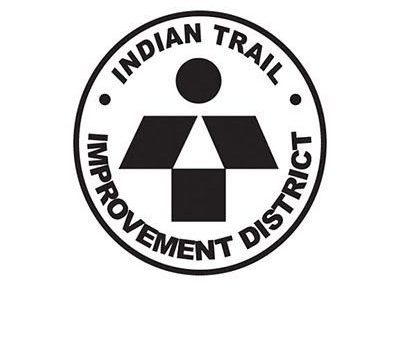A mobility plan that meets the safety and needs of Acreage residents would also address increasing traffic from surrounding developments that encroach on Indian Trail Improvement District roads, Kim DeLaney with the Treasure Coast Regional Planning Council told ITID board members during a workshop presentation on Wednesday, June 3.
Such a plan could include tree-lined streets with separated pedestrian and equestrian paths, bioswales and safe crossings, with medians, bump-outs and other means of traffic calming to control pass-through or local traffic, DeLaney said.
Her presentation followed several workshops held recently with ITID residents to get input on what types of amenities and traffic control they would like to see in the community. “We’ve been working with the district on the development of a mobility plan,” DeLaney said. “What we’re trying to assist with in the community is planning for mobility at Indian Trail. The goal of the plan is to create a safe, interconnected transportation network of complete streets.”
The network would focus on the most congested parts of The Acreage — the southeastern area and around Northlake Blvd.
“The traveling public in ITID is not just the cars, it’s the people on bikes, people on foot, but you also have folks driving golf carts, and you have sidewalks that are a little narrow,” DeLaney said. “If you’re in a pandemic and meeting social distancing, it’s very hard for two people to ride or walk on a 5-foot sidewalk.”
DeLaney said she noticed that the community has a lot of children.
“The roadway network is so challenging to cross. We have locations where there are three crossing guards at one intersection,” she said. “That’s an unusual condition. What that tells us planners is there’s something breaking down in the transportation network that requires that many traffic-safety officers.”
DeLaney said this problem could be mitigated with lighted, raised and/or stamped crossings that would make them safer for everyone.
Bump-outs at intersections would provide less crossing distance for pedestrians, as well as slow down traffic and provide space for aesthetic landscaping.
She said equestrians are also being considered, with proposals for preserving, improving and extending safe riding trails.
“We have riders in the region,” DeLaney said. “We don’t have a lot of areas like that left.”
The district’s mobility plan should provide the safest locations and crossings for equestrians, at the same time making it safe for cars as well.
The roadway network is generally thought of in three layers, she said.
“The macro layer is the regional vehicular network,” DeLaney said. “These are the largest scale roads for longer distance drivers, and they operate at higher speeds.
Those roads include Northlake Blvd., Royal Palm Beach Blvd., State Road 7, Okeechobee Blvd. and Southern Blvd.
“The second level is what we call the local vehicular network,” she said.
Those are county roads like Coconut Blvd. running from Northlake to Orange Blvd., Orange Blvd. running from Seminole Pratt Whitney Road to Royal Palm Beach Blvd., and 60th Street North from the State Road 7 extension to west of Seminole Pratt. In the long term, the county also has control over 190th Street North and West Sycamore Drive.
“Those aren’t really on the horizon for any kind of immediate improvements, but there are, as the community knows, immediate plans to improve and widen these roadways that we’re calling the local vehicular network,” DeLaney said. “These roads are actually controlled in large part by Palm Beach County.”
The balance of the roadway network is controlled by ITID.
“These are what are considered local neighborhood streets,” she said. “The district has two types — paved roads and dirt roads.”
DeLaney said a plan should provide protection for these local roads so they do not become pass-throughs or alternate routes for drivers trying to avoid traffic control strategies on the larger roads.
She said TCRPC has also done a complete inventory of school bus stops, which will be brought into consideration when planning for future roads.








